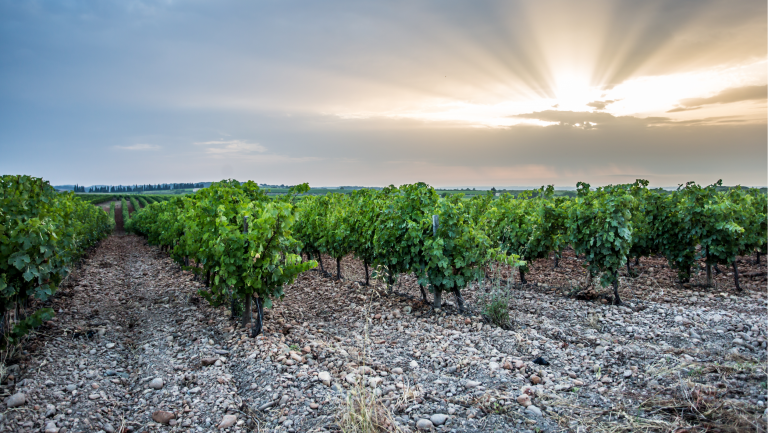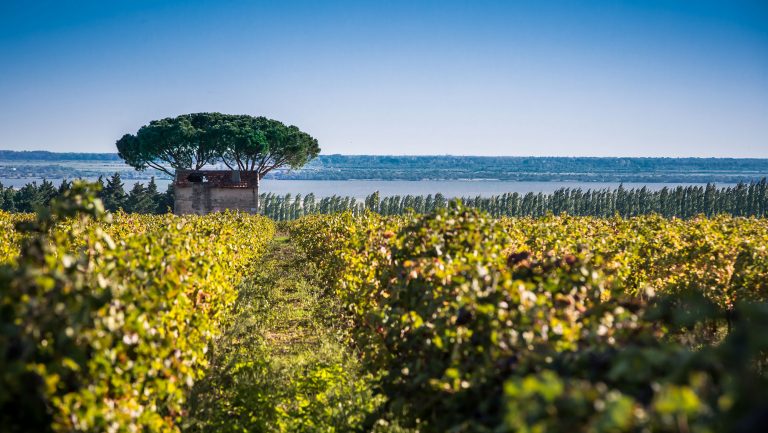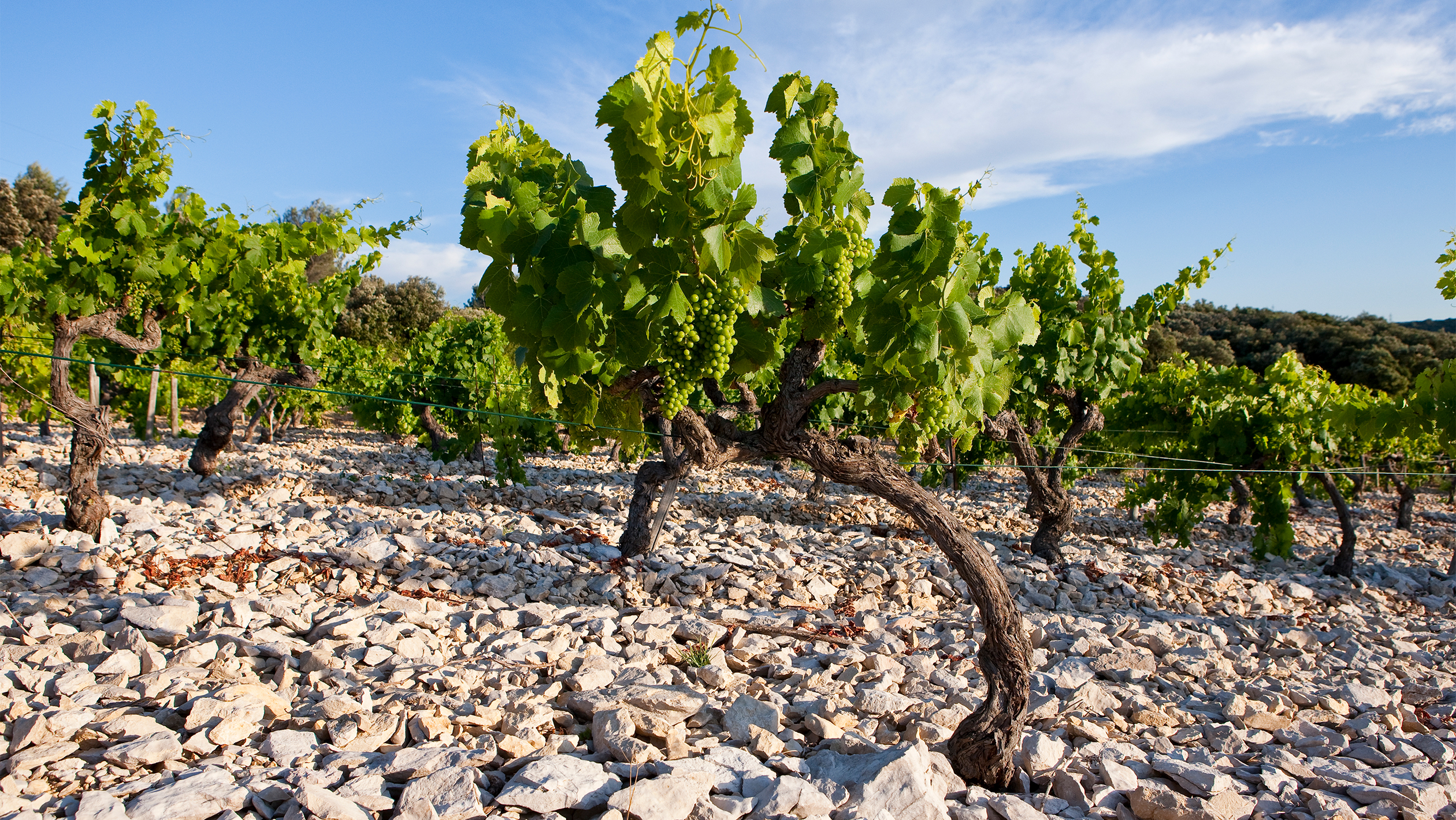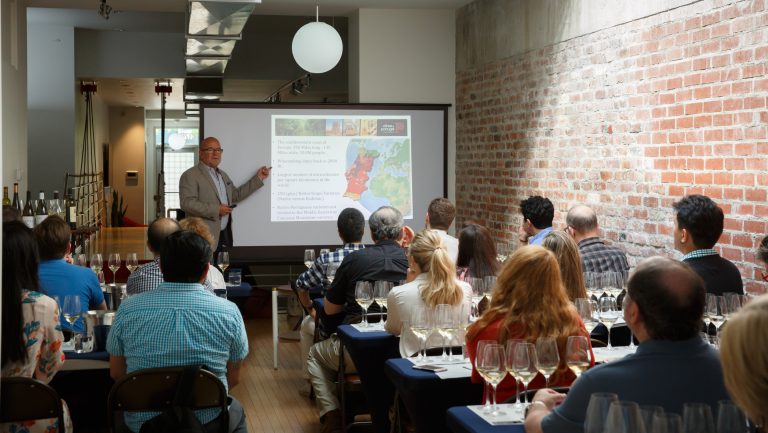This advertising content was produced in collaboration with our partner, Costières de Nîmes.
The Costières de Nîmes region of the Rhône Valley is a study in contrasts. It is the southernmost appellation of the region, but it is simultaneously the coolest in the southern Rhône Valley. Despite its distinctly Mediterranean climate and iconic pebbled soils that most associate with Grenache, its reds are most often based on Syrah. And while it sits at the intersection of the Rhône Valley, Languedoc, and Provence, Costières de Nîmes wines are distinctly expressive of their specific, unique terroir.
But even as Rhône Valley wines have soared in popularity, this intriguing appellation has largely remained under-the radar among American buyers and consumers. It isn’t for lack of wine quality. “The unheralded Costières de Nîmes AOC has some exceptional winemakers making some stunning wines,” says David Sawyer, a New York-based consulting sommelier, educator, and beverage director. Rather, the 30-year-old appellation has taken some time to come into its own—and now it’s ready to share these delicious and diverse wines with the world.
Cooled by the Sea
The Costierès de Nîmes AOC is located in the southernmost part of the southern Rhône Valley, nestled between the valley of the Gardon River to the north and the Mediterranean Sea to the south. This 40-kilometer area serves as the transition from Provence and Languedoc into the Rhône Valley, with 4,000 hectares of vineyards centered near the historic Roman city of Nîmes, which is now a gastronomic center of southern France.

Don’t miss the latest drinks industry news and insights. Sign up for our award-winning newsletters and get insider intel, resources, and trends delivered to your inbox every week.
Climatically, Costières de Nîmes shares many of the features of the southern Rhône Valley’s more famous regions, among them a Mediterranean climate, plenty of sunshine, and the effects of the fierce Mistral wind. Its soil even shares the region’s iconic pebbles, which were deposited by the Rhône and Durance Rivers. These well-drained pebbles, known locally as grès, sit five to 15 meters deep, over moisture-holding clay-limestone and under a layer of sand.
But it’s the region’s particular position that differentiates the character of the wines produced here. “Costières de Nîmes is a terrace overlooking the Rhône delta and the Mediterranean sea, a unique biosphere called Camargue,” says Michel Gassier, the winemaker for Famille Gassier. “Its microclimate is defined by its proximity to water.”
The Petite Camargue, a marshy plain, exposes Costières de Nîmes vineyards directly to the sea. When the stony soils heat under intense sunshine, it creates an oven effect, causing the warm air to rise and pull cool sea breezes into the vineyards.
“It’s a region with amazing terroir,” says Sawyer. “The perfect cooling afternoon winds come in from the sea, over the flat Camargue, and whip up onto the elevated plateau that is Costières de Nîmes to temper the high summer temperatures.” The result is a huge swing between daytime and nighttime temperatures, preserving acidity in grapes and imbuing Costières de Nîmes wines with distinct freshness and pure fruit flavors.
“Costières de Nîmes has an underdog feeling,” says Matthew Kaner, the wine director and co-founder of Bar Covell and Solovin Wine Club, among others, in Los Angeles. “But the vignerons there know their history and worth.”
That history can be traced to the ancient Greeks and Romans, a heritage showcased on the streets of Nîmes, where Roman ruins still sit. Winemaking continued throughout the Middle Ages, and Costières de Nîmes wines were even known to be popular among the Papal court in Avignon. The construction of the Canal du Midi in the 17th century buoyed wine production in the area, making vine irrigation easier, and the emergence of railways later allowed Costières de Nîmes vintners to transport their wines more easily.
However, phylloxera hit the region particularly hard, and vintners replanted vines on fertile plains that were ideal for vigor, but not for quality. Costières de Nîmes didn’t begin its modern renaissance until the 1950s, and then earned AOC status in 1986.

Defined by Freshness
While 30 years is relatively young for an appellation, renewed interest in Rhône Valley wines has emerged over the past two decades, and yet awareness of Costières de Nîmes has remained somewhat limited outside of the region.
“Costières de Nîmes as a region is really coming into its own with respect to its identity,” says Kaner. The region has also benefited from an influx of knowledge that has come through the next generation of vintners.
“The quality of wines has improved dramatically,” says Gassier. “Young generations have traveled and participated in harvests around the planet and are returning convinced of the tremendous potential of their family vineyards.”
Winemaking is primarily focused on red and rosé wines, which comprise 55 and 40 percent of the region’s production, respectively. The wines follow the blending tradition of the southern Rhône—in fact, Costières de Nîmes wines must always be a blend of at least two grapes—but don’t expect to see an abundance of Grenache-forward blends here, thanks to the region’s cooler temperatures.
“Costières is the only southern Rhône Valley appellation where Syrah is the dominant black grape,” says Gassier. “Syrah-based cuvées keep a fresh balance that is unusual for this far south.”
If a single quality could describe the wines of Costières de Nîmes, it would be freshness. Nervy acidity carries through all of the region’s styles, making them quite easy-drinking and approachable.
“My first impression of these wines were that they were more nuanced, complex, and exciting than I expected,” says Carole Mac, the producer and host for Wine4Food, who describes the reds as having notes of black olive and bacon to complement black cherry and spice.
“The stress on the vines from growing and living in those rocky, relatively infertile, fast-draining soils means that the vines don’t over-produce,” says Sawyer. “This helps prevent flabby, unbalanced, and uninteresting wines.”
Rosés, too, carry refreshing acidity and can be serious and complex food pairing wines worthy of aging. “I loved that I could taste the sea and salty air of the region in the whites and rosés,” says Mac.
Although white wines comprise just 5 percent of production in Costières de Nîmes, they have proved to be just as high in quality as the reds and rosés. “Whites have shown tremendous potential and frequently shine among the best in Rhone tastings,” says Gassier. Roussanne succeeds particularly well in amidst the cool breezes Costières de Nîmes, making lively and characterful white wines.
Made to Over-Deliver
Now that they have cemented their identity among the regions of the southern Rhône Valley, Costières de Nîmes winemakers are looking ahead. “I was impressed with the progressive, sustainable, and biodynamic winemaking of the region,” says Mac. More than a quarter of the region’s wines are grown organically, and the amount of organic acreage is expected to increase in the years to come.
“Costières produces very exciting wines that are still under the radar,” says Gassier. “For people who are ‘adventurous’ enough to try them, they are a very pleasant surprise.”
The fact that many U.S. consumers aren’t familiar with Costières de Nîmes means that the wines offer great values to both buyer and consumer. “Price point, taste profile, and story seem to be the key points millennials are analyzing before making their wine selection, and they are willing much more than their parents to go into uncharted territories,” says Gassier. “Costières de Nîmes is the perfect appellation for them.”
With Costières de Nîmes, buyers have an opportunity to introduce consumers to something new that still carries the familiarity of the Rhône Valley. The price point is also attractive for wine lists and retail shelves alike. “They over-deliver,” says Sawyer. “To drink the same quality wines from more renowned regions would cost you double or more.”
For those who don’t already know Costières de Nîmes, now is the time to start exploring. “Costières de Nîmes is the Rhône Valley’s best kept secret,” says Gassier. But given the quality, freshness, and value that these wines offer, it probably won’t stay a secret for much longer.

Dispatch
Sign up for our award-winning newsletter
Don’t miss the latest drinks industry news and insights—delivered to your inbox every week.










